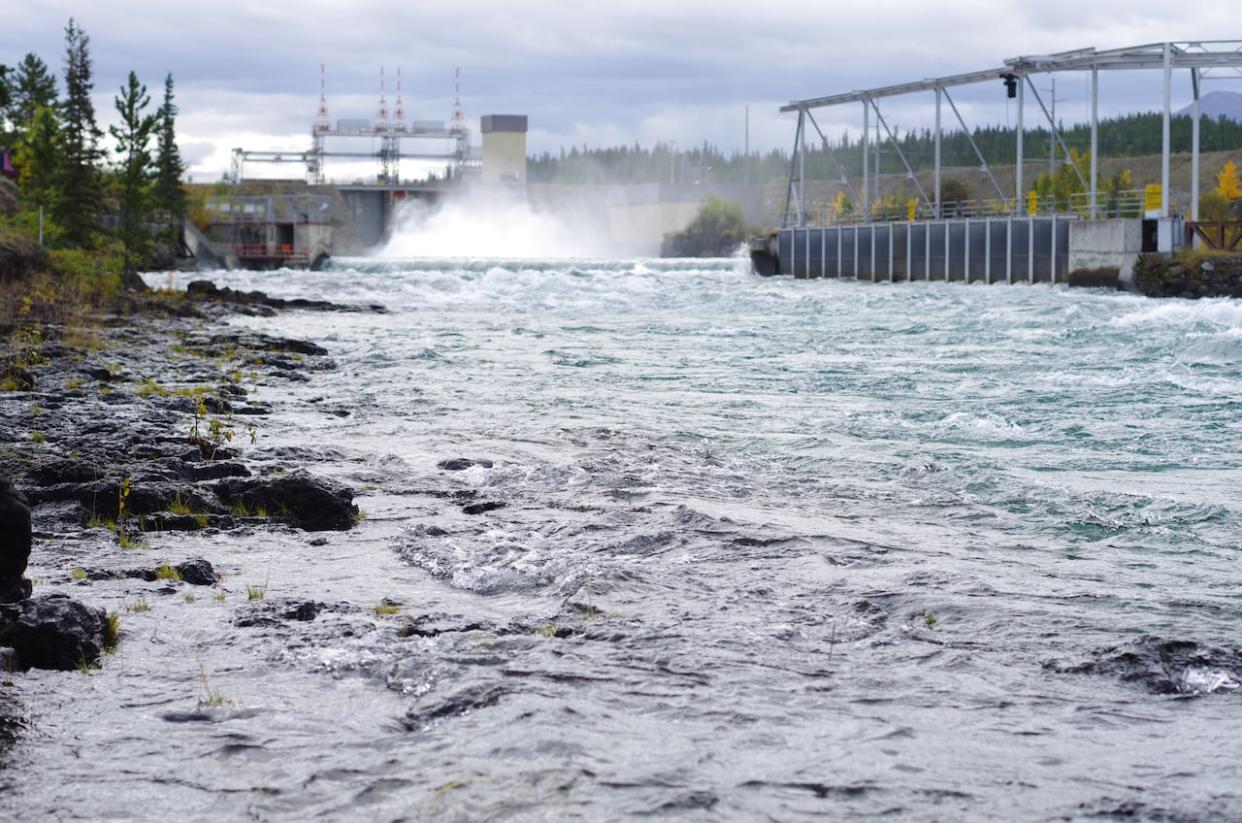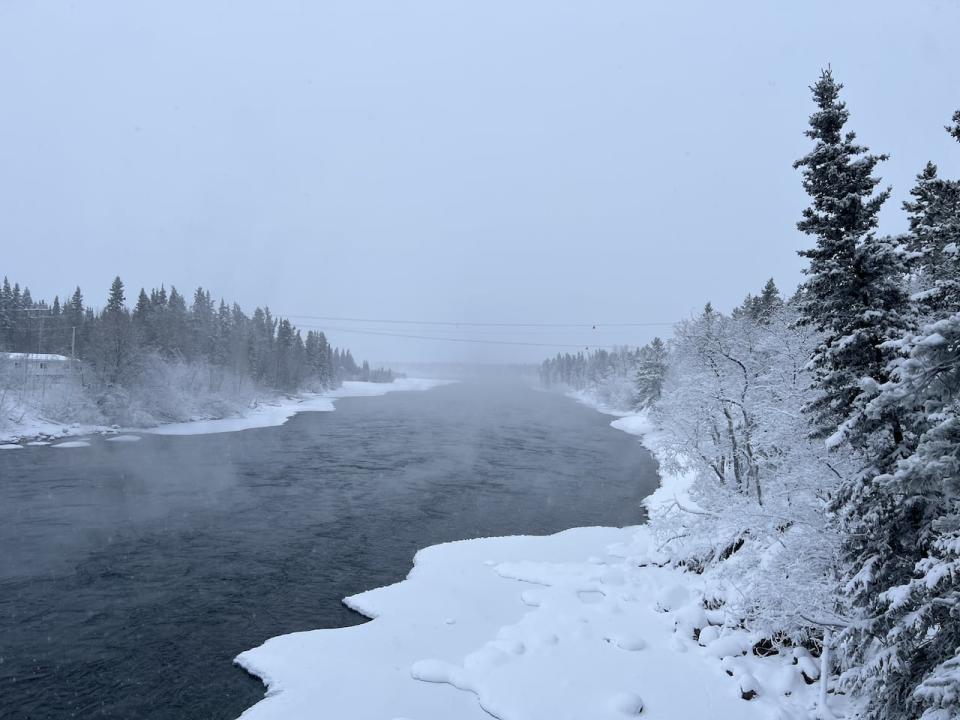Yukon Energy puts focus on salmon as it seeks new 25-year licence for Whitehorse dam

Like his ancestors, John LaVallee has lived near the shores of Lake Laberge in the Yukon his whole life. For the last seven years, he has not cast his salmon nets.
The feeling he ascribes to that? Pain.
"They're taking away our way of life," said the Ta'an Kwäch'än citizen. "That's really upsetting. It takes away my rights."
LaVallee is talking about the impact of Yukon Energy's hydroelectric dam in Whitehorse, upstream from Lake Laberge on the Yukon River, and the effect the dam has had over the years on salmon populations.
Now, the dam could be on the verge of change.
How to protect salmon appears to be a central theme of Yukon Energy's current proposal to renew the dam's 25-year operating licence that expires next year.
In late December, Yukon Energy submitted the proposal to the Yukon Environmental and Socio-economic Assessment Board (YESAB), which didn't exist in 2000 when Yukon Energy last renewed its operating licence for the dam. At the time, the Kwanlin Dün First Nation, Carcross/Tagish First Nations and the Ta'an Kwäch'än Council had yet to negotiate their seminal treaties, which paved the way toward the creation of YESAB.
Built in 1958, the Whitehorse dam is a crucial piece of infrastructure for the territory, generating enough power to supply on-grid residents with roughly 80 per cent of their electricity during the summer. With that, it's a mainstay to meeting the Yukon government's aspirations to reduce the territory's emissions by 45 per cent this decade.
The licensing proposal states the First Nations were not consulted before or as the dam was being built, nor were they accommodated. Construction of the facility inundated traditional fish camps, prime berry-picking patches, hunting grounds, historic travel routes and more, according to the document.
Then there are the salmon.
"[There was] a significant decline in the formerly reliable salmon migration and the associated salmon harvest," the proposal states.

Chinook salmon in the Whitehorse fish ladder viewing chamber in 2020. (William Twardek)
This time around, Yukon Energy worked with local First Nations on its licence renewal proposal. According to the document, it's an attempt to "build a better path forward … based on reconciliation, respect, trust, collaboration, and accountability."
"Yukon Energy has heard [from the First Nations] that understanding and mitigating potential project effects on salmon are the priority," it reads.
The three affected First Nations declined comment for this story.
Turbines injuring or killing some fish
The dam affects local salmon in two primary ways.
First, it blocks migration routes and hinders salmon from spawning upstream, said Michael Muller, vice president of planning, environment, health and safety at Yukon Energy.
Second, the facility's heavy turbines are injuring and killing some fish migrating downstream through the dam, Muller said.
And it's now happening at a time when warmer water temperatures, deadly parasites and overfishing are also affecting salmon populations in the region.
As first reported by CBC News, an internal Yukon Energy study obtained by an access to information request suggests a significant number of juvenile salmon are being killed as they swim downstream through the Whitehorse dam.

Looking down the Yukon River, just below the Whitehorse dam. (Paul Tukker/CBC)
The new licence proposal includes several ways the company could protect fish, including lake trout and whitefish as well as salmon.
This includes possible improvements to the fish hatchery and fish ladder in Whitehorse, in an effort to compensate for fish killed by the dam's turbines. Other possible safeguards suggested in the proposal include replacing the dam's four turbines — all installed between the 1950s and 1980s — with new, "fish-friendly" models.
According to a 2011 study by the Electric Power Research Institute, a U.S.-based non-profit, fish-friendly hydro turbines could increase fish passage survival to roughly 98 per cent for fish measuring at least 200 millimetres.
Muller said Yukon Energy is also committed to figuring out how to steer more juvenile salmon away from the turbines, and toward safer passages like the spillway.
"We don't know [how]," Muller said, "but we're already committed to studies."
No decommissioning plans
The proposal, which seeks a new 25-year licence, includes no plan on how the dam will eventually be decommissioned.
"With appropriate maintenance decommissioning is unlikely to occur within the next 25 years," it states, adding that the dam has a roughly 100-year lifecycle, and that when the new operating licence expires in 2050, the Whitehorse dam will be 92 years old.
Sebastian Jones, with the Yukon Conservation Society, takes issue with the lack of a decommissioning plan. He argues that mine proposals are required to include such plans, and it shouldn't be different for dams.
"We need to properly address the ecosystem effects of these hydro dams and we can't do that without considering reclamation," he said.
"Hydro dams have finite lives."
In the meantime, Jones is calling on Yukon Energy to turn the dam's turbines off during peak salmon migration.
"It's the turbines that basically act as massive blenders, and any juvenile salmon that goes through the turbine winds up being turned into juvenile salmon soup," he said.
Jones said battery storage can mitigate the loss of power generation when the turbines are turned off for those periods.
Yukon Energy's grid-scale battery project in Whitehorse, is a $35-million initiative to install the largest battery of its kind in the North, and is expected to be up and running later this year.
"The reason why that can help," Jones said, "is because, in the summertime, when we've got these fish migrations taking place, there's lots of access to lots of photovoltaic and wind energy. We should be able to top up these batteries."

